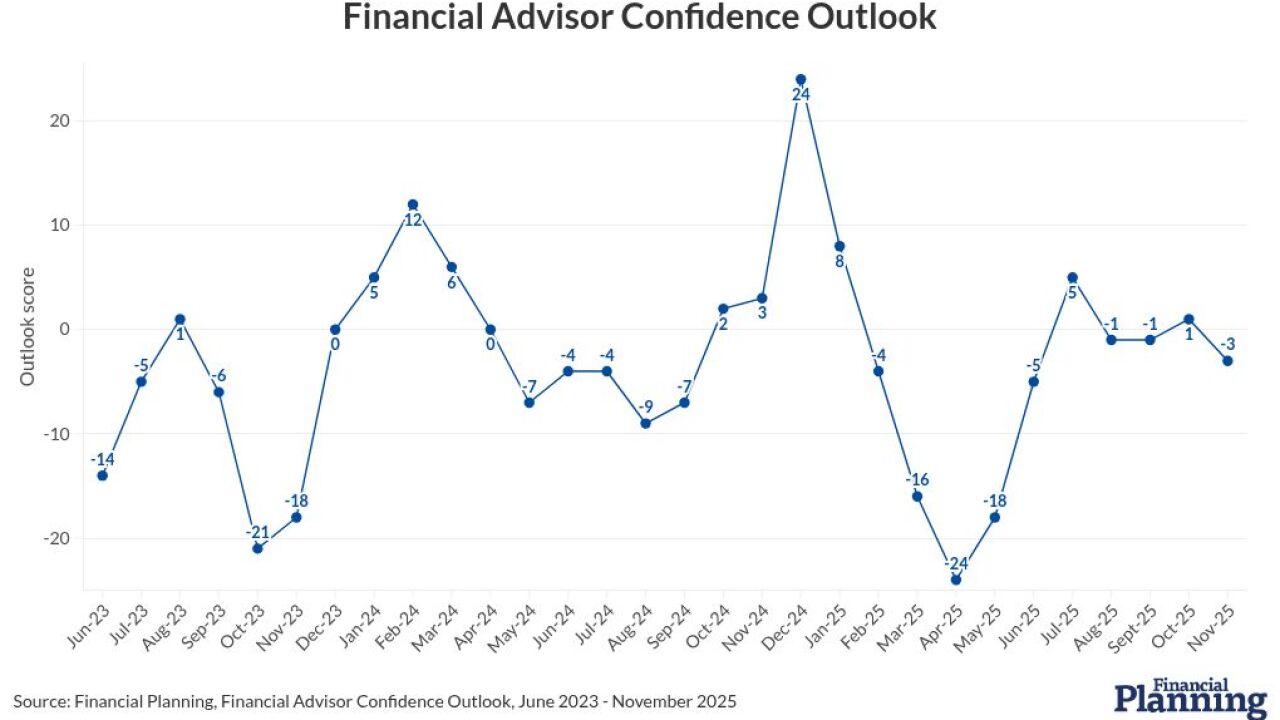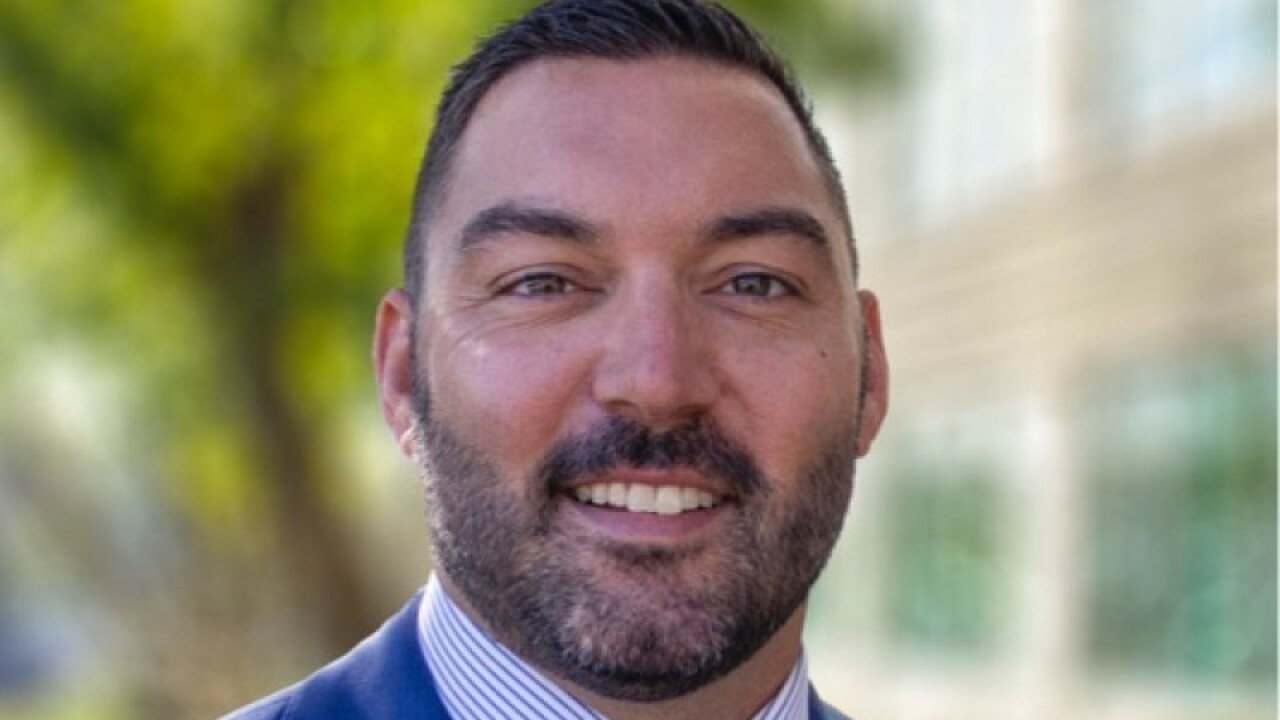As year-end tax planning and charitable giving activity swing into high gear, advisors may want to take a look at donor-advised funds. These funds allow an individual to make donations to an IRS-approved 501(c)3 charitable organization in a simple, tax-advantaged way.
The donor-advised fund offers two advantages over direct charitable donations. First, it allows the giver to donate an asset with unrealized gains without liquidating it. Second, it allows the giver to get a charitable tax deduction credit for up to the asset's full market value. In addition, donor-advised funds offer the giver the ability to advise the sponsor of the fund on how the proceeds from the transferred asset should be invested and the timing of payouts to chosen charities.
A donor-advised fund allows the giver to deduct the full market value of the transferred asset in the year it was contributed in the form of a tax deduction (up to 30% of the giver's adjusted gross income on that calendar year's tax return) without realizing any capital gain. A donor can make a cash contribution to the fund and deduct up to 50% of his or her AGI.
Both of these deductions are subject to limitations, especially the new restrictions taking effect in 2013 under the Pease limitation. This limitation applies to individuals with AGI of over $250,000 and to couples with AGI over $300,000; it reduces a charitable deduction by 3% of the donated amount each time AGI hits a series of income thresholds. Advisors and their clients should consult a tax advisor to determine the applicable tax deductibility limits and the ability to carry forward charitable deductions to future tax returns.
The tax-efficient flexibility of donor-advised funds is one of the most attractive features of this investment vehicle and can result in clients making larger-than-anticipated charitable donations. This is especially true of a potential donor who has a long-term holding in an individual stock that has a low cost basis but that has experienced lackluster performance in recent yearsor who feels the stock no longer fits in with the overall portfolio's objectives. One additional benefit is that if someone owns a "no basis" assetone where the cost basis is unknown or the paperwork for it is missingthe individual can still donate the asset and claim the full current market value of it as a deduction.
Different Flavors
Donor-advised funds have been in existence since the 1930s on a limited scale. But they have gained much broader appeal since the early 1990s when large financial services firms began to enhance the flexibility and scope of the products available for donors. These funds can be sponsored by the charitable arm of a financial firm, like Fidelity Charitable, Schwab Charitable and Vanguard Charitable. There are also national donor-advised fund sponsors, like the National Philanthropic Trust, and community charitable funds.
Many of the donor-advised products today require a minimum investment of only $5,000 or $10,000. Fee schedules at most fund sponsors are generally on a sliding scale based on the total assets invested. This is in addition to the typical fund or commingled pool expenses of the underlying vehicles used in the allocation.
Donor-advised funds today have evolved into a significant source of funding for many charitable organizations. In 2011, donor-advised funds in the United States received over $9.6 billion in charitable contributions, according to the National Philanthropic Trust's 2012 Donor-Advised Fund Report. This volume of charitable giving is expected to continue to grow, particularly due to higher levels of participation among young wealthy givers and the recent strong performance of the capital markets.
Advisor Interest Growing
The popularity of donor-advised funds continues to rise among financial advisors who have clients with complex tax-planning issues and more diverse portfolios. Fidelity Charitable notes that over 70% of its new charitable contributions and over 60% of new donor-advised fund accounts in the first half of 2013 came from an advisor referral. The asset selection process for the donor's contribution presents an opportunity to get a better picture of your client's portfolio, while also providing a window to revisit existing investment policy statements and goals.
The asset allocation decisions for donor-advised fund assets will usually be based on when the donor wants to make payouts from the fund to his or her chosen charities. Most donor-advised fund options resemble those of target-date retirement or mixed-asset products. These investment products largely use a fund-of-funds structure, where the underlying investment vehicles are the sponsor company's mutual funds or commingled pools that follow an established investment strategy at that firm.
Securities such as accumulated publicly traded stock and bond holdings are commonly used to make the gift to donor-advised funds. However, funds have increasingly developed the ability to accept more complex assets such as real estate, collectibles and limited private partnerships. Sarah Libbey, President of Fidelity Charitable, says her firm has developed a program to accept shares of less-liquid holdings such as S-corporations and C-corporations, which has seen increased interest from donors in recent years.
Another convenient feature of using a donor-advised fund is that the fund permits donations to multiple charitable organizations with the proceeds from just one gift. Sponsors generally liquidate the donated asset at their discretion and place the proceeds into one of their chosen investment options from which distributions are made to charitable organizations over time. The fund sponsor processes the charitable contribution paperwork and performs the recordkeeping as payouts to the charitable organizations are distributed. The donor can help multiple charities while receiving the necessary tax documentation from one sponsor. The sponsor of the donor-advised fund vets the designated charitable entity's 501(c)3 IRS eligibility on an on-going basis.
The tax advantages of a donor-advised fund might have particular appeal in 2013 to individuals in higher tax brackets, since the capital gains tax rate has increased this year for higher wage earners (individuals with taxable income of $400,000 or more, or $450,000 for couples filing jointly), rising from 15% to 20% as a result of the American Taxpayer Relief Act of 2012. Separately, a new 3.8% Medicare tax for higher-income taxpayers is now in effect. It generally applies to the portion of a taxpayer's net investment income that exceeds AGI of $200,000 for individuals and $250,000 for couples filing jointly. An additional incentive to act for some may be if they discover that the imbedded unrealized capital gains in their portfolio are higher than anticipated because of the recent robust performance of the capital markets.
New Markets
One constant in the United States is that individuals at all income levels tend to give throughout market cycles. Interestingly, the recently released 6th annual Fidelity Millionaire Outlook (September 2013) found that wealthy members of generations X and Y tend to give more as a percentage of their wealth than do older baby boomers. The study found that wealthy generation X and Y individuals gave $54,000 annually on average to charity, whereas baby boomers gave $12,000 annually on average. Thus, the favorable underlying fundamentals for charitable giving do seem to be in place for a continued positive uptick in donor-advised account creation for the foreseeable future.
If you are thinking about recommending a donor-advised fund to your clients, remember that they can accomplish many different objectives from a personal financial perspectiveespecially portfolio rationalization in a tax-efficient manner. There are some caveats, however. The donor does relinquish control over the asset once it has been gifted to a donor-advised fund, for example. These funds have also come under pressure from some charities for holding on to assets for too long. In addition, the sponsoring fund entity will need to vet the charity the client selects to ensure that it is a 501(c)3 before the fund money is donated.
Barry Fennell is a senior research analyst at Lipper specializing in mutual funds and
performance analysis. He has also written extensively on capital markets and fund performance.





